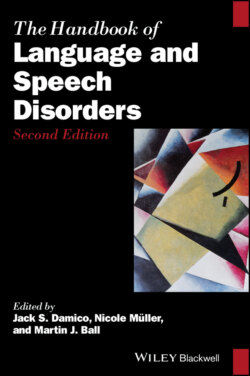Читать книгу The Handbook of Language and Speech Disorders - Группа авторов - Страница 31
2.5 Relevant Theory
ОглавлениеDiversity implicates both micro‐ and macro‐levels of interaction, with the individual being part of increasingly larger contexts, as emphasized in theoretical approaches (e.g., Bronfenbrenner’s ecological systems, 1986; Hofstede’s cultural dimensions, 2011) and health organization policies (e.g., WHO, 2019b). The micro‐level implicates personal factors: body functions/structures, health conditions, and an individual’s participation in exosystem groups (family, peers). The macro‐level implicates environmental factors like the role of society, history, culture, and economy in peoples’ lives. Understanding clients from diverse backgrounds relies on the relationship between an individual’s culture and language, and how these affect speech language services. Disability itself has different meanings across (sub)cultures (Battle, 2012). Whereas the capacity for learning is innate, culture and language are learned constructs, having a dynamic nature characterized by both evolution and/or dissolution in someone’s lifespan. In all cultures and across languages, individuals vary based on values, experiences, outlook, behaviors, and linguistic/cultural differences. Even among the same cultural group(s), individuals speaking the same language(s) will exhibit patterns of difference across any of the above aspects. Body language, humor, attitudes toward family, authority, religion, gender roles, and time correspondingly diverge across individuals and cultures. It is worth noting that all these entities are themselves in constant flux.
